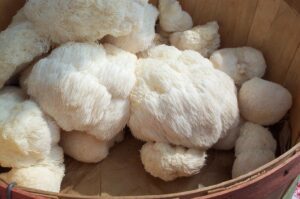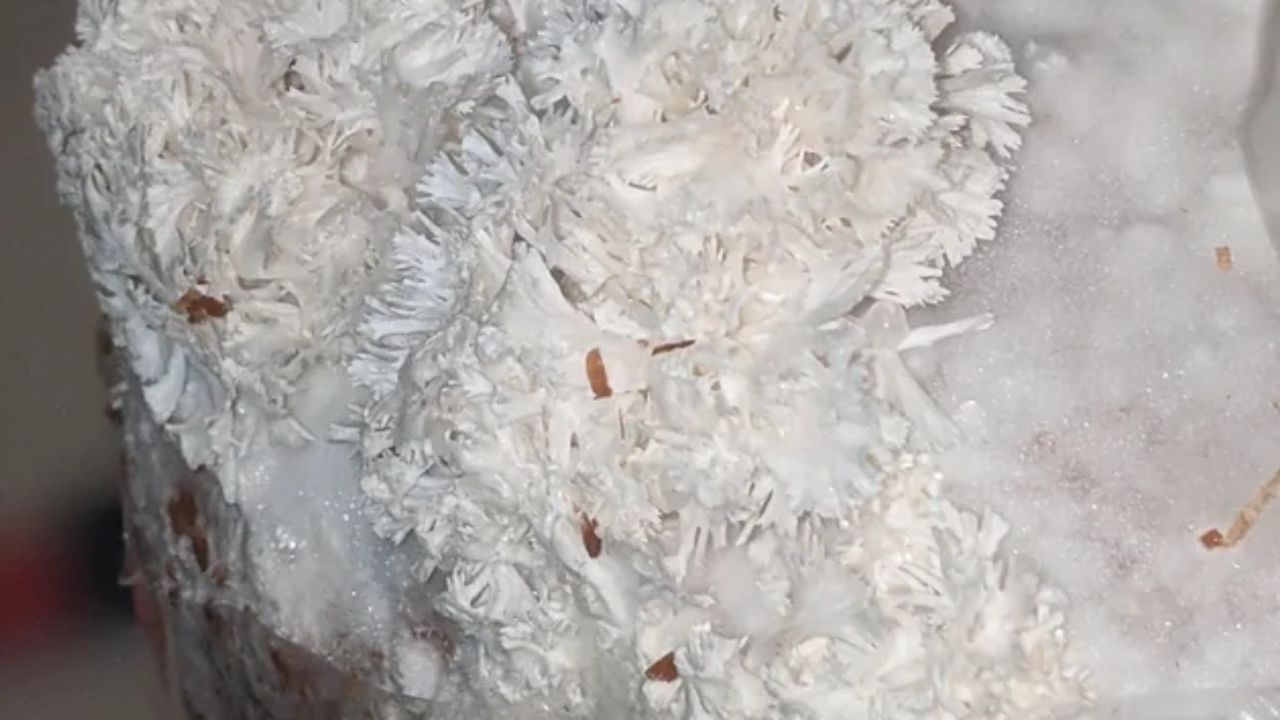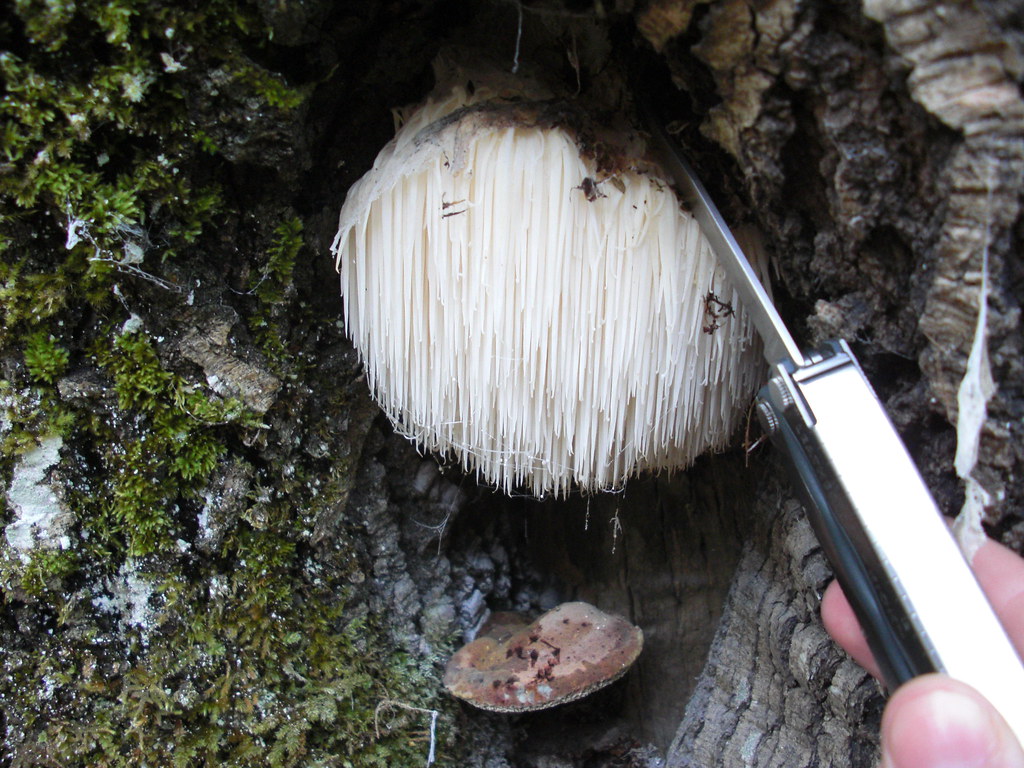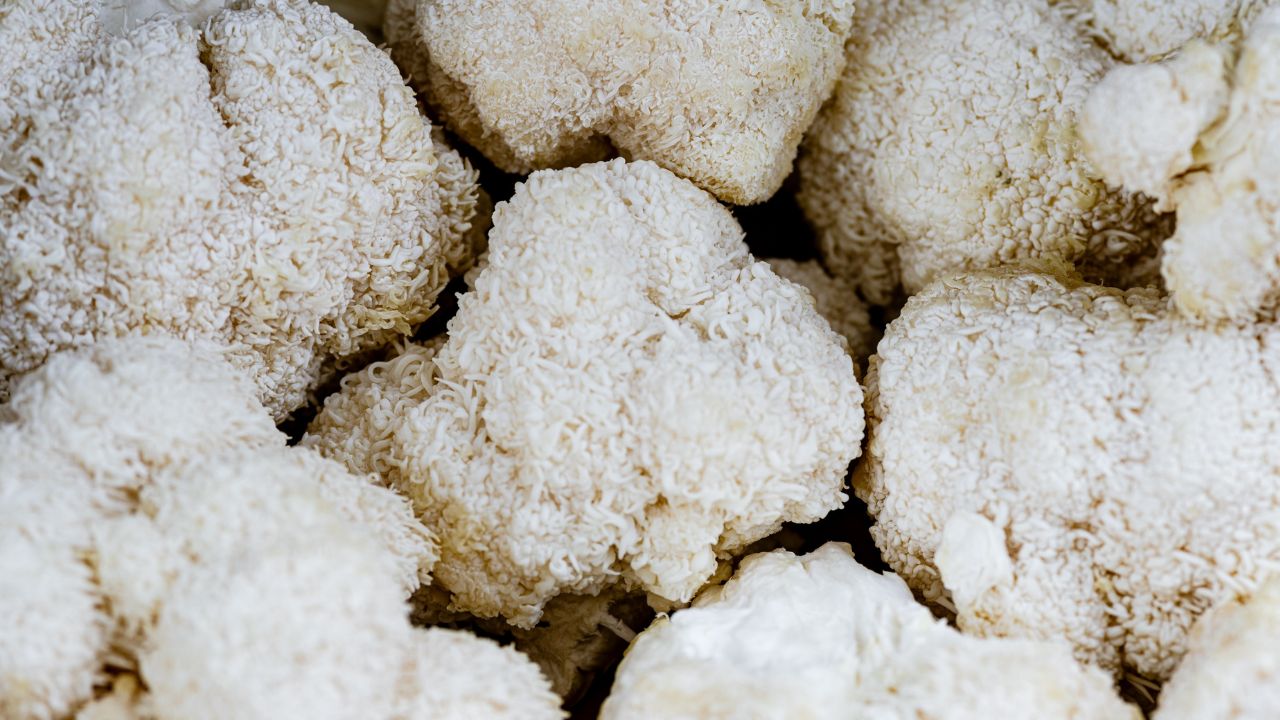How to Grow Lion’s Mane Mushrooms at Home 2023
Lion’s mane mushrooms are a type of edible mushroom that is native to North America, Europe, and Asia.
With their shaggy, white appearance, Lion’s Mane mushrooms earned their nickname.
They are also known as Bear’s Head mushrooms and are a popular choice for cooking due to their unique texture and mild flavor.
Additionally, their high antioxidant content makes them a nutritious addition to any meal.

Contents
- 1 Materials Needed to Grow Lion’s Mane Mushrooms at Home
- 2 How to Grow Lion’s Mane Mushrooms at Home
- 2.1 Lion’s Mane Substrate Recipe
- 2.2 Lions Mane Spores
- 2.3 Inoculate the Substrate With Lion’s Mane Mushroom Spores
- 2.4 Lion’s Mane Fruiting Conditions
- 2.5 Lion’s Mane Pinning
- 2.6 When to Harvest Lion’s Mane Mushrooms
- 2.7 How to Harvest Lion’s Mane Mushrooms
- 2.8 Lion’s Mane Grow Temperature
- 2.9 Lion’s Mane Mushroom Turning Brown
- 2.10 Lion’s Mane Mushroom Turning Yellow
- 3 FAQs
- 4 Conclusion
Materials Needed to Grow Lion’s Mane Mushrooms at Home
To grow lion’s mane mushrooms at home, you’ll need the following:
Sterilization Equipment
Sterilizing equipment is necessary to kill any contaminants.
A pressure cooker for sterilization is sufficient. Also gloves and protective glasses.
Container
You will need a container to store the substrate.
For lion’s mane mushrooms, I recommend these lions mane grow bags.
They are the ones I use and they have worked for me.
Lion’s Mane Spawn
It’s hard to find good quality spores without contamination, which is why I recommend these Liquid Lion’s Mane Mushroom Spores.
Substrate
The most common substrate for lion’s mane mushrooms is sawdust, straw, or hardwood logs.
If you do not want to buy the materials separately and prepare them yourself, to save time you can buy this substrate already made and sterilized.
Humidifier
Lion’s mane mushrooms prefer cool temperatures between 55-65°F (12-18°C).
They also need high humidity levels, so a humidifier may be necessary.
How to Grow Lion’s Mane Mushrooms at Home
Once you have everything you need, follow these steps:
Lion’s Mane Substrate Recipe
The substrate is the material that the mushrooms will grow on.
For lion’s mane mushrooms, the best substrate is a combination of hardwood sawdust and straw.
- To make the substrate, mix equal parts of hardwood sawdust and straw.
- The sawdust should be finely ground and the straw should be chopped into small pieces.
- Sterilize the substrate to kill any contaminants.
Here is an article on sterilization techniques for mushroom substrate at home.
Lions Mane Spores
Lion’s mane spores are the tiny particles that are released from the mushroom when it is mature.
These spores are used to inoculate the substrate and begin the process of growing lion’s mane mushrooms.
Inoculate the Substrate With Lion’s Mane Mushroom Spores
Once you have the substrate prepared, you can begin to grow your own lion’s mane mushrooms.
- The first step is to inoculate the substrate with lion’s mane mushroom spores.
- To do this, mix the spores into the substrate and spread it evenly.
- Then, place the substrate in a plastic bag and seal it.
- Place the bag in a warm, dark place and allow it to incubate for 2-3 weeks.
- Seal the container and let the mycelium grow. This can take several weeks.
Lion’s Mane Fruiting Conditions
Once the substrate has been incubated, it’s time to move it to the fruiting conditions.
Lion’s mane mushrooms prefer a temperature of between 65-75°F (18-24°C) and a humidity of 90-95%.
Maintain a high level of humidity and keep the temperature cool to encourage the growth of the fruiting bodies.
Once the substrate is fully colonized with mycelium, cut small slits in the bag to allow for fruiting.
Lion’s Mane Pinning

Pinning is the process of the mushrooms forming their caps. This usually occurs 4-6 weeks after the substrate has been inoculated.
When to Harvest Lion’s Mane Mushrooms
Lion’s mane mushrooms are ready to harvest when the caps are fully open and the gills are exposed.
This usually occurs 4-6 weeks after the mushrooms begin to form.

How to Harvest Lion’s Mane Mushrooms
Harvesting lion’s mane mushrooms are easy.
Simply use a sharp knife to cut the mushrooms at the base of the stem.
Make sure to cut the mushrooms cleanly, as this will help to prevent contamination.
Harvest the lion’s mane mushrooms when they are mature, and repeat the process with a new substrate.
Lion’s Mane Grow Temperature
Lion’s mane mushrooms prefer a temperature of between 65-75°F (18-24°C). This is the ideal temperature for the mushrooms to grow and form.
Lion’s Mane Mushroom Turning Brown
If you’ve noticed your lion’s mane mushroom turning brown, it could be a sign of oxidation or decay.
If the browning is limited to just a small area, you can simply trim off the discoloured part and use the rest of the mushroom.
However, if the browning is widespread or the mushroom has a foul odour or slimy texture, it’s best to discard it.
To prevent your lion’s mane mushrooms from turning brown, you can try cooking them as soon as possible after harvesting or purchasing them. This will help to slow down the oxidation process and keep your mushrooms fresh for longer.
Lion’s Mane Mushroom Turning Yellow
If you’ve noticed your lion’s mane mushroom turning yellow, it could be a sign of aging or over-ripeness.
This can happen naturally as the mushroom matures, or it could be a result of improper storage or handling.
In case you notice yellowing, it’s best to use the mushrooms as soon as possible before they become overripe and lose their flavor and texture.
It’s also worth noting that some lion’s mane mushrooms have a natural yellow tint, especially around the edges of the mushroom. This is not necessarily a sign of spoilage or over-ripeness, but rather7 a natural characteristic of the mushroom.
If you’re unsure whether your lion’s mane mushrooms are still fresh and safe to eat, it’s best to err on the side of caution and discard them.
FAQs
How long does it take to grow lion’s mane mushrooms?
It usually takes 4-6 weeks for the mushrooms to form and be ready to harvest.
What is the best substrate for lion’s mane mushrooms?
The best substrate for lion’s mane mushrooms is a combination of hardwood sawdust and straw.
What is the ideal temperature for lion’s mane mushrooms?
The ideal temperature for lion’s mane mushrooms is 65-75°F (18-24°C).
What is the ideal humidity for lion’s mane mushrooms?
The ideal humidity for lion’s mane mushrooms is 90-95%.
Conclusion
In this article, we discussed everything you need to know about growing lion’s mane mushrooms at home, including when to harvest, how to harvest, substrate recipes, temperature, fruiting conditions, pinning, humidity, sawdust spawn, and more.
By following the steps outlined in this article, you can easily grow your own lion’s mane mushrooms at home.
So, what are you waiting for? Get started today and enjoy the delicious and nutritious lion’s mane mushrooms!



